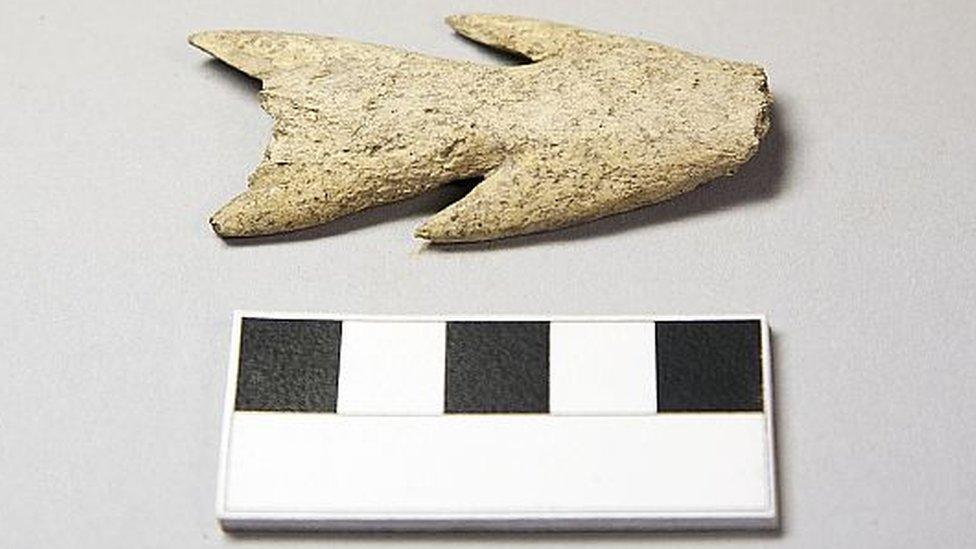Pictish skeleton found at 1,400-year-old Highland cemetery
- Published
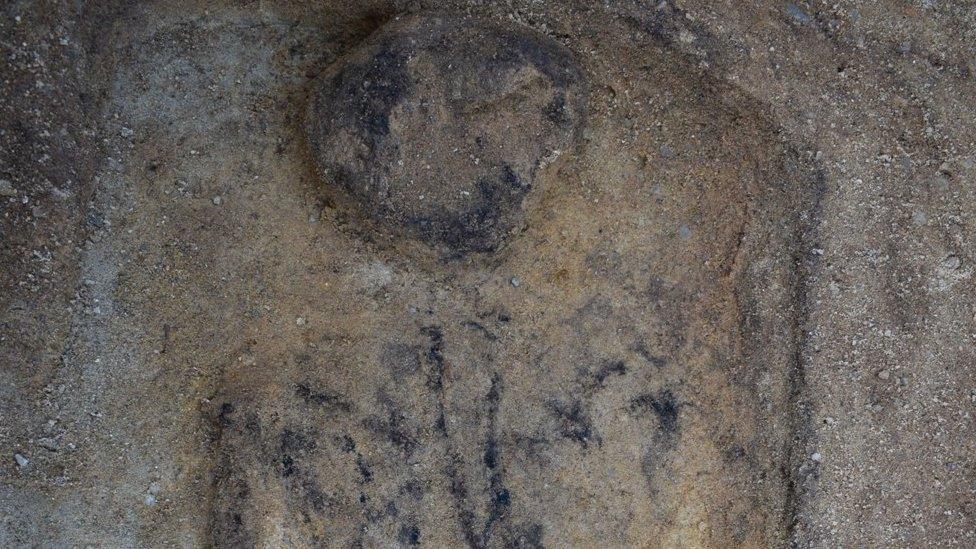
Remains of the skeleton were found on the last day of an archaeological dig
Archaeologists have excavated the partly-preserved remains of a Pictish skeleton at a 1,400-year-old cemetery in the Highlands.
The skeleton was found on the last day of a two-week dig at Tarradale near Muir of Ord on the Black Isle.
Due to the acidity of the soil, no remains of human bodies had been found until the "surprise discovery".
Archaeologists say the cemetery is one of Scotland's largest recorded Pictish burial grounds.
Site supervisor Steve Birch said finding the remains of the skeleton was a "eureka moment" for him.
He said: "As it was the very last day I decided to do a little bit more excavating in a grave that I had been working on for a few days."
The archaeologist cleared away sand and gravel to reveal strange shapes in the earth.
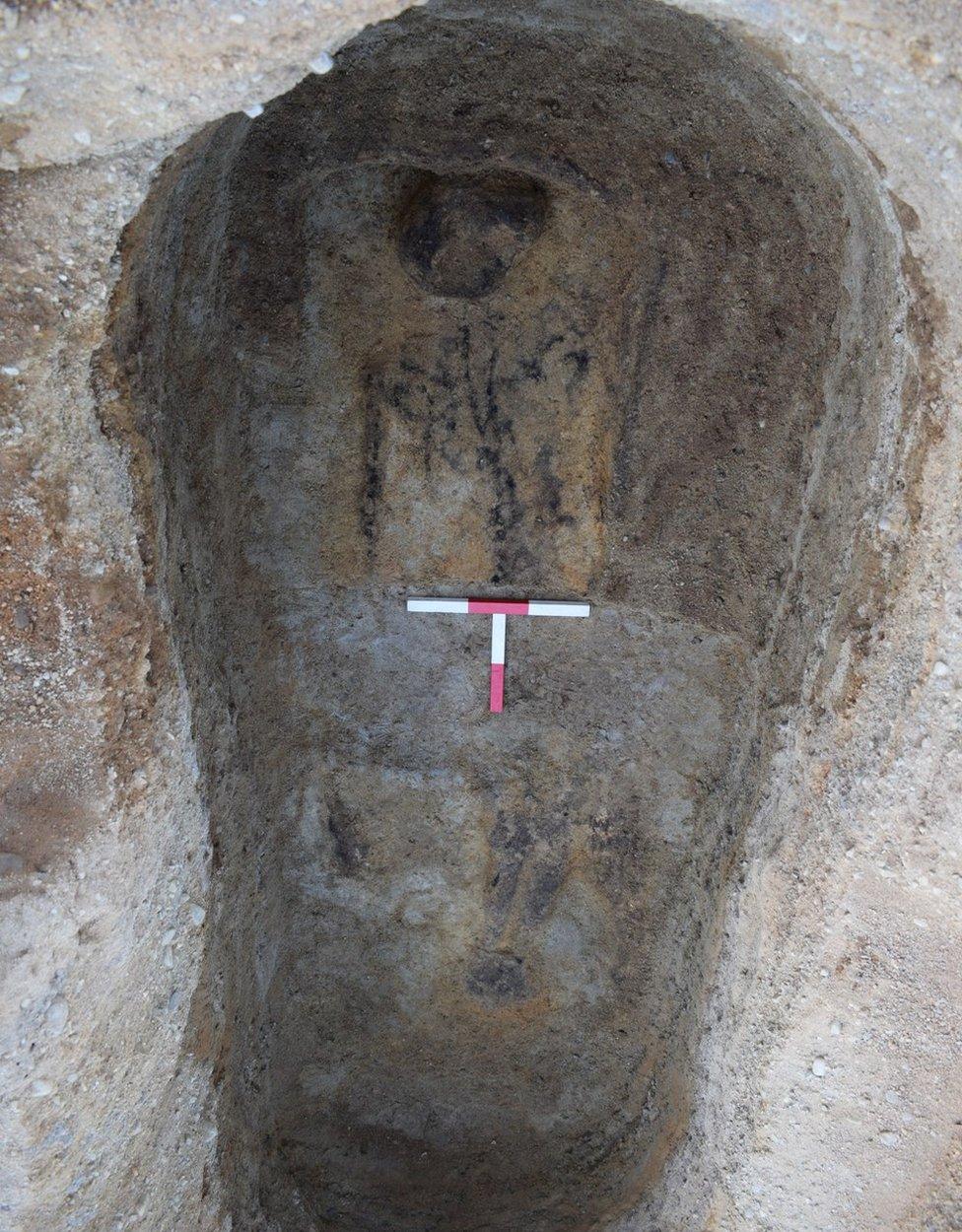
The remains could be 1,400 years old

He said: "After I found some blackened patches in the ground I decided to trowel back at that level and to my astonishment the ghostly outlines of a skeleton started to appear.
"I was able to identify the spinal column with individual vertebrae, and then moving up the body I uncovered the upper arms and shoulders, all of which were just black stains in the ground.
"Moving carefully higher up, I was able to locate the skull, which is better preserved - although it had partly collapsed in on itself."
Mr Birch also found legs and feet, which appear to have been bound together before burial, and eventually almost the whole outline of the skeleton could be seen, surrounded by the "faint shadow" of a coffin".
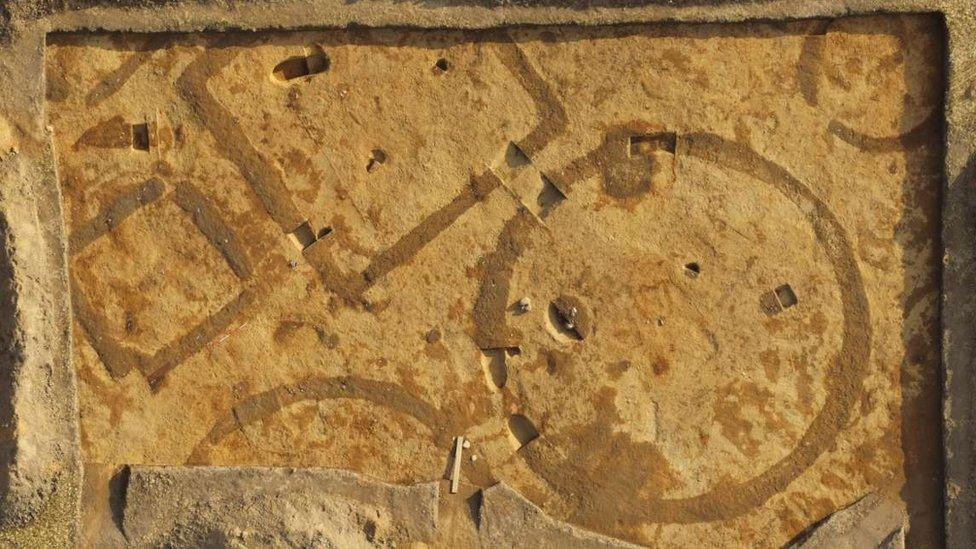
An aerial image of the excavated cemetery
Prof Gordon Noble, of the University of Aberdeen and an advisor on the excavation, said Tarradale was one of the largest recorded Pictish barrow cemeteries.
He said: "The Tarradale Through Time project has done a fantastic job of revealing and excavating part of the cemetery.
"The discovery of human remains within one of the barrows is a particularly exciting result for it may help date one monument of the cemetery and tell us more about the individual buried within the grave.
"Very few of these cemeteries have been excavated so projects like this have much to tell us about the ways in which the Picts buried their dead."
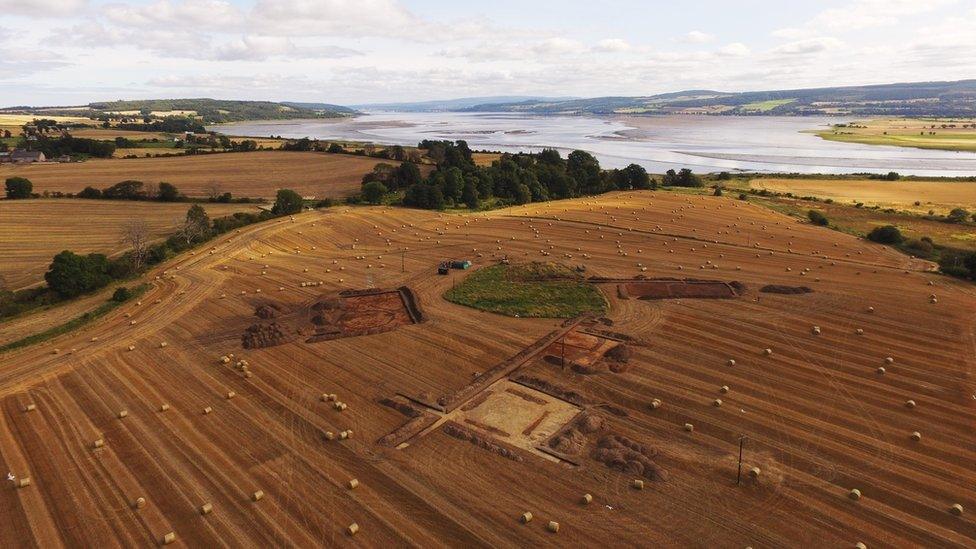
The site at Tarradale is one of Scotland's largest recorded Pictish cemeteries
- Published11 September 2019

- Published23 August 2019
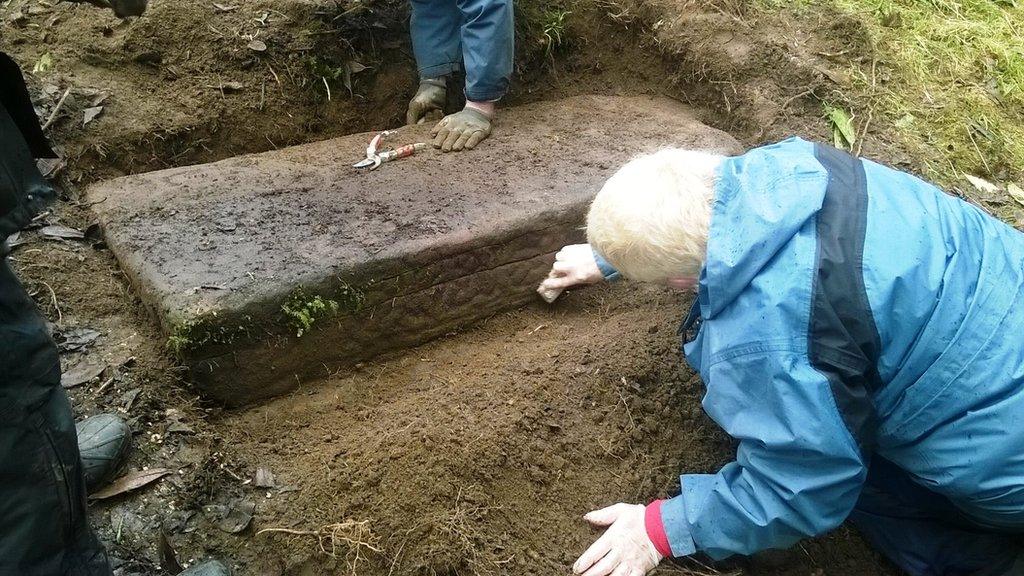
- Published24 October 2018
